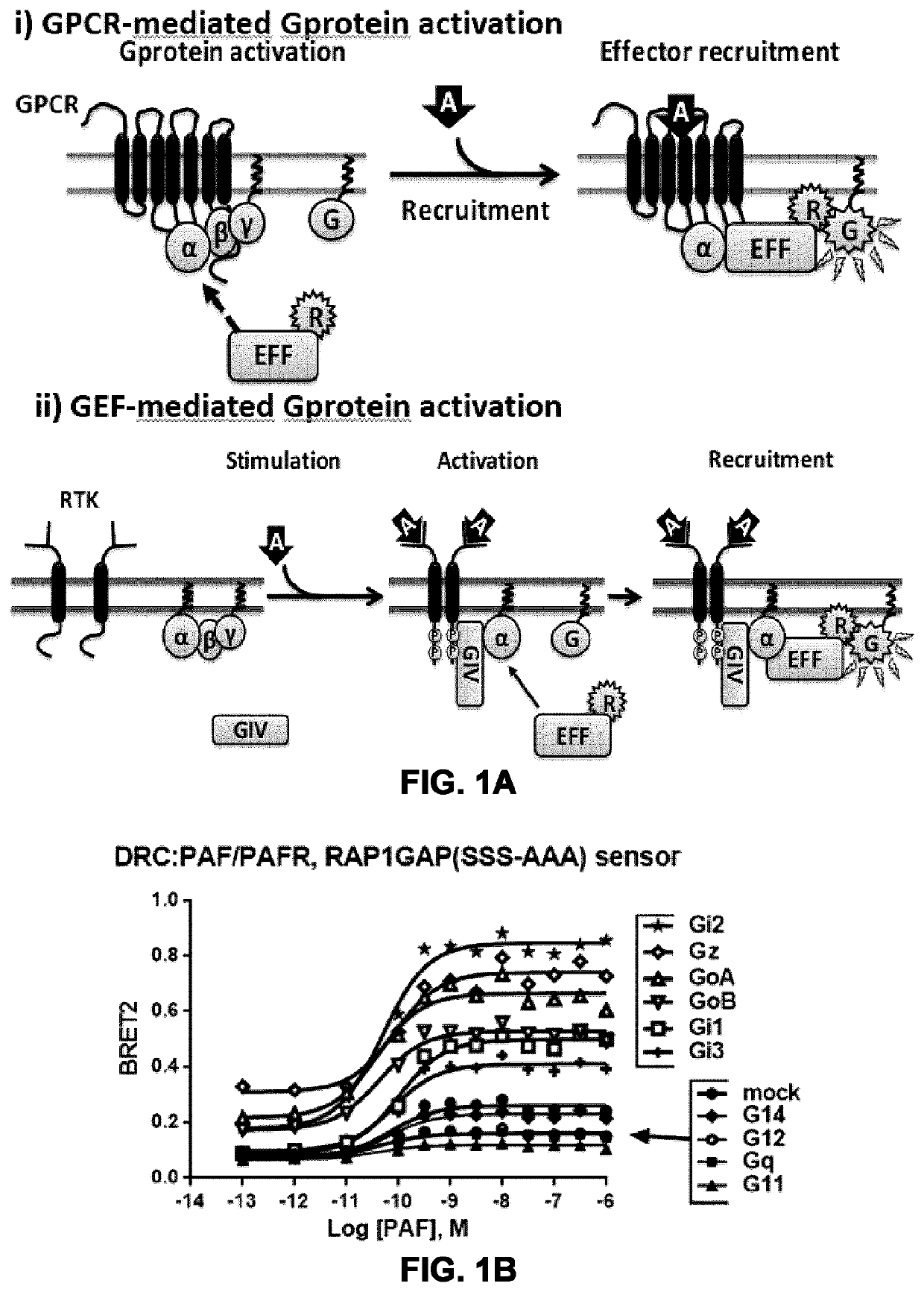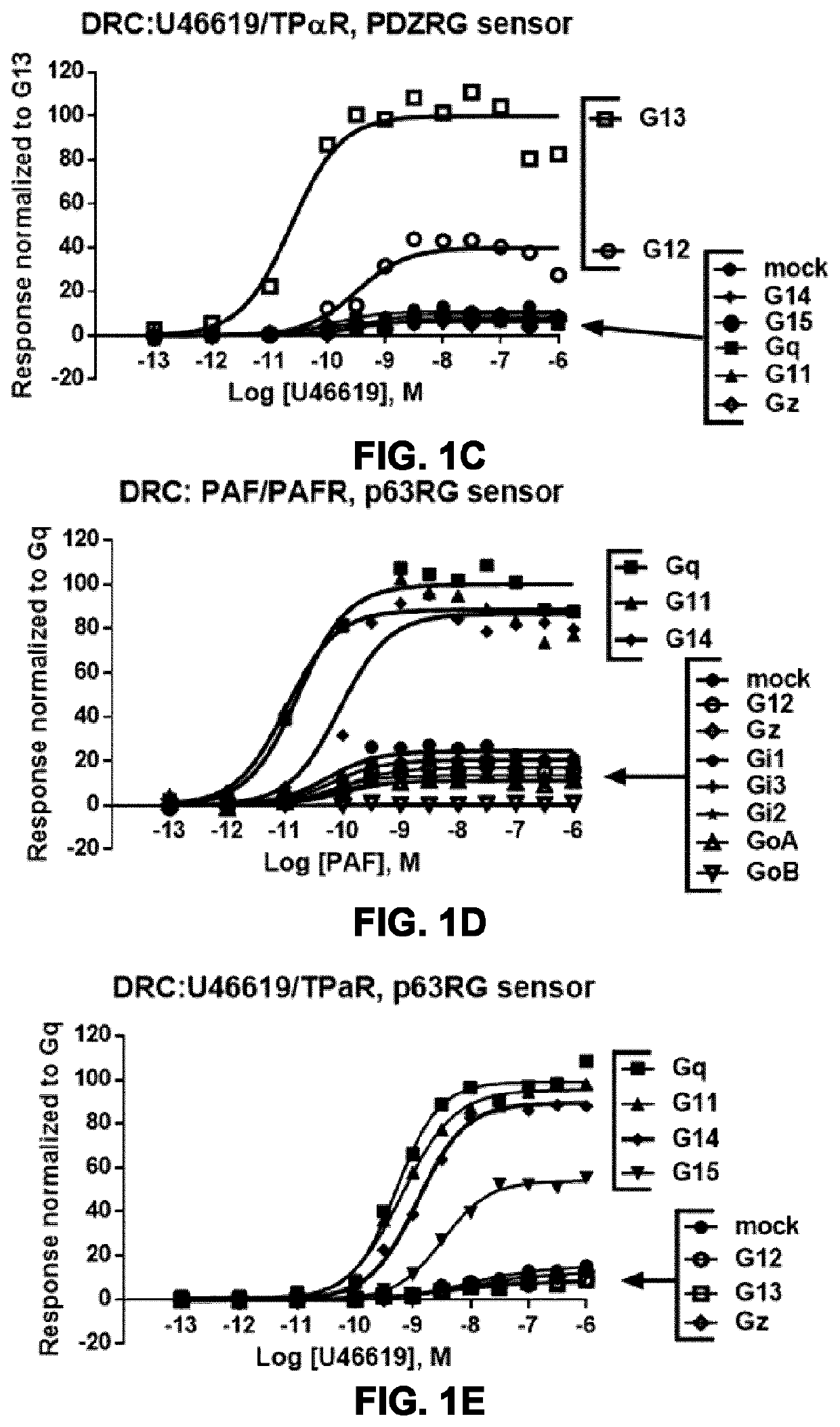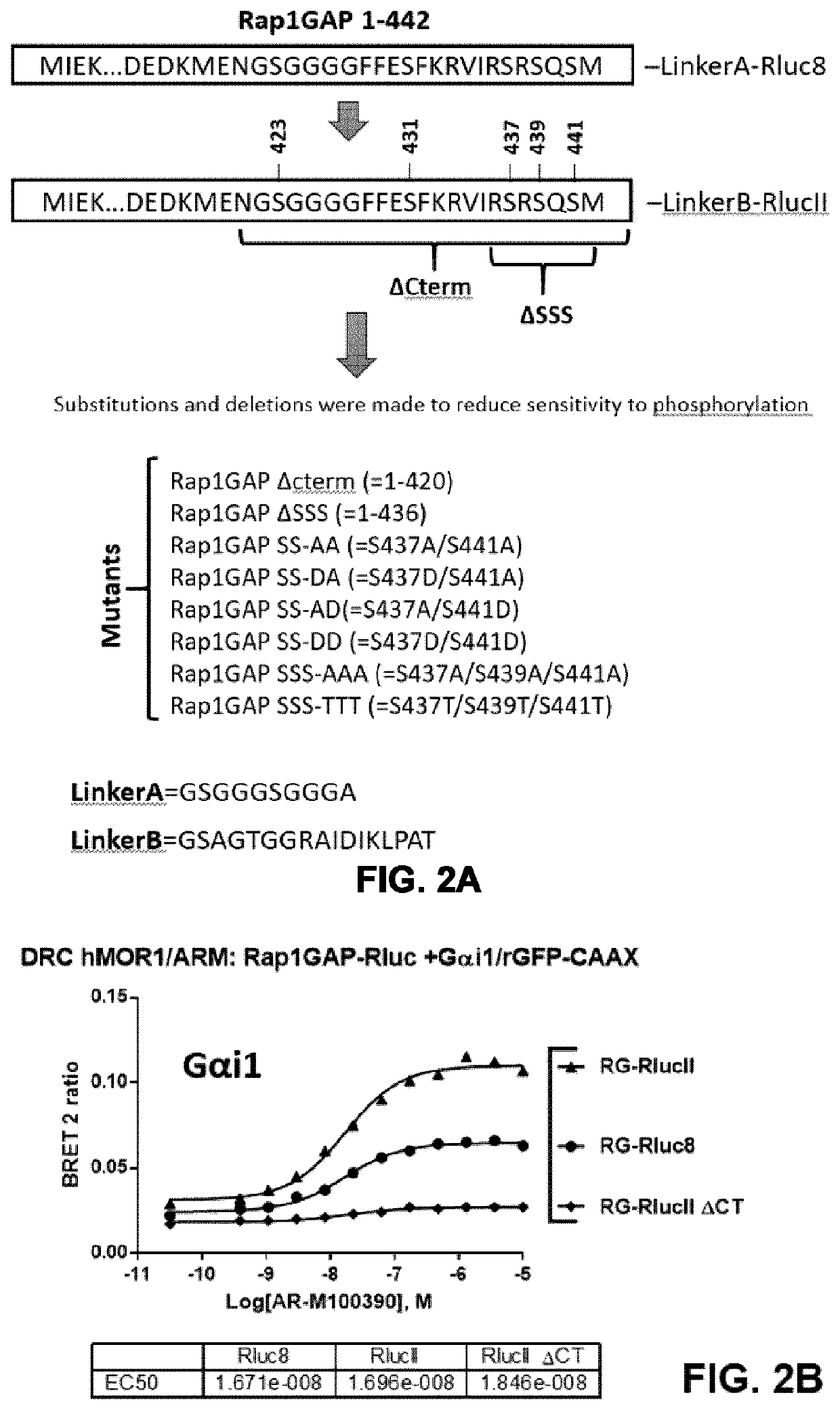Systems and methods for the assessment of g-protein activation
a technology of g-protein activation and system, applied in the field of monitoring of g-protein activation in cells, can solve the problems of not allowing the monitoring of g-protein activation at different cellular compartments and in a g protein family-selective manner
- Summary
- Abstract
- Description
- Claims
- Application Information
AI Technical Summary
Benefits of technology
Problems solved by technology
Method used
Image
Examples
example 2
Generation and Specificity of Systems and Assays for Monitoring G Protein Activation in a G Protein Family-Selective Manner
[0230]FIGS. 1A to 1E show the generation and specificity of systems and assays for monitoring G protein activation in a G protein family-selective manner, and at different cellular compartments, based on the translocation of Gα subunit interacting polypeptides (GASIP) from G protein effectors. FIG. 1A depicts the principle of an effector-based sensor to monitor, in i) GPCR-mediated direct Gprotein activation and, in ii) guanine-nucleotide exchange factor (GEF)-mediated Gprotein activation. Cells expressing a receptor, a subcellular localization domain (for example for the plasma-membrane (PM) or for early endosomes (EE)) tagged with rGFP, the Gα-interaction domain of a specific effector tagged with a BRET donor (e.g., Rlucll) are exposed to an agonist to activate the co-expressed G protein. In i), the agonist-induced GPCR stimulation activates directly G protein...
example 3
Systems and Assays for Monitoring Activation of the G Proteins of the Gi Family
[0231]FIGS. 2A to 2Z show the optimization and use of a Rap1GAP-based BRET sensor for monitoring activation of the G proteins of the Gi family (Gi1, i2, i3, oA, oB, z). The various constructs tested are shown in FIG. 2A. The results presented in FIGS. 2B to 2E shows that a detectable BRET signal was obtained using the two BRET donors tested (Rluc8 and Rlucll), with Rlucll typically giving a better dynamic window relative to Rluc8. The results presented in FIGS. 2F and 2G demonstrate that the Rap1GAP(1-442) construct is sensitive to phosphorylation, as evidenced by the lower responses measured when cells were pre-treated with forskolin (which promotes an increase cAMP production and activation of protein kinase A leading to phosphorylation of different proteins), which could affect the assay. C-terminal truncated variants (1-420 and 1-436) and different mutants comprising combinations of Ser to Ala and Ser...
example 4
Systems and Assays for Monitoring Activation of the G Proteins of the G12 / 13 Family
[0234]The optimization and use of a PDZRhoGEF-based BRET system for monitoring activation of G proteins of the G12 / 13 family is described in FIGS. 4A-G. A fragment of PDZRhoGEF comprising the G12 / 13 binding domain (residues 281-483, PDZRG) was tagged in C-terminal with the BRET donor Rlucll (FIG. 4A). The dynamic window for measuring activation of G12 and 13 was shown to be directly dependent on the level of expression of the Go subunit, but the level of expression did not affect the potency for l-BOP / TPαR-mediated activation of G12 and 13 as evidenced by the comparable LogEC50 values obtained with the different amounts of G12 and 13 (FIGS. 4B and 4C). PDZRG-Rlucll was used to profile TPαR ligands on G12 and G13 activation at the PM. Cells were stimulated with known full agonists (U46619, I-BOP, CTA2), with one partial agonist (U51605) and the antagonists I-SAP and SQ 29,558. The results depicted in F...
PUM
| Property | Measurement | Unit |
|---|---|---|
| humidity | aaaaa | aaaaa |
| humidity | aaaaa | aaaaa |
| temperature | aaaaa | aaaaa |
Abstract
Description
Claims
Application Information
 Login to View More
Login to View More - R&D
- Intellectual Property
- Life Sciences
- Materials
- Tech Scout
- Unparalleled Data Quality
- Higher Quality Content
- 60% Fewer Hallucinations
Browse by: Latest US Patents, China's latest patents, Technical Efficacy Thesaurus, Application Domain, Technology Topic, Popular Technical Reports.
© 2025 PatSnap. All rights reserved.Legal|Privacy policy|Modern Slavery Act Transparency Statement|Sitemap|About US| Contact US: help@patsnap.com



